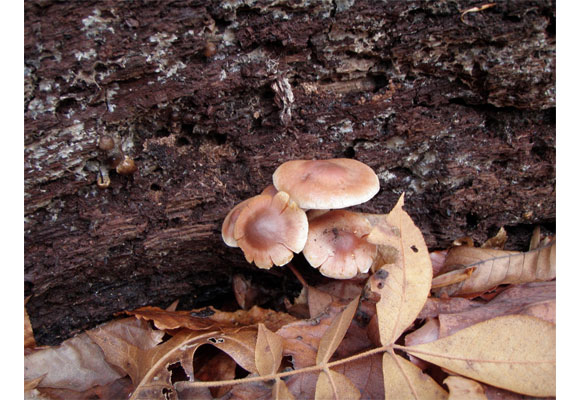Decomposers and Detritivores in the Energy Pyramid
In order for a natural ecosystem to be balanced there is need for three types of organisms; producers, consumers and decomposers. Producers are groups of organisms that make organic compounds out of inorganic ones. They include green plants that use energy from the sun to make their own food. Consumers get their nutrients from feeding on other organisms.
Decomposers help in converting the leftovers of animals and plants to useful substances for other living organisms. They are mainly bacteria and fungi. Have you ever wondered what would happen if the decomposers and consumers were not in the ecosystem?
Detritivores play a very important in the cycle as they are the consumers of dead leaves, old skin, carcasses and manure. They include millipedes, earthworms and slugs that feed on dead plants and animals but leave some parts and their feces that are converted to energy by the decomposers. Players in the energy cycle function hand in hand, a decomposer is found at the lowest part of the cycle as it deals with the remains. They complete the energy cycle. The roles of the decomposers and detritivores almost coincide.
Detritivores
Detritivores improve the nutritional value and the texture of the soil: This makes the soil productive to plant life which translates to availability of food for the herbivores and carnivores like human beings. They however do not complete the energy cycle as their wastes are energy products that need to be decayed. Consumers may eat an animal or plant but it will leave some amount of energy in form of fur and bones.
Get rid of dead organisms: They feed on dead organisms both plants and animals. They assist in ridding the environment of remains of organic material.

Decomposers
Decomposers actually help in the process of decay: They convert what is left by the detritivores that is the wastes and leftovers of bones and fur. This is converted to carbon dioxide used by plants for making its own food.
This is an indirect contribution to the provision of oxygen used for breathing. Plants take in carbon dioxide during photosynthesis and release oxygen which is essential for the lives of animals.
This is an indirect contribution to the provision of oxygen used for breathing. Plants take in carbon dioxide during photosynthesis and release oxygen which is essential for the lives of animals.
Adding nutrients to the soil: Decomposers break down non usable compounds in the air like magnesium and nitrogen into simple elements that can be used by plants or absorbed into the soil. These broken compounds enrich the soil increasing the chances of survival of plant life.
They keep the environment clean and healthy: Decomposers help in decay and conversion of remains of plants and animals to carbon dioxide and energy. This means that if decomposers were not there in the ecosystem we might have to cope with the stench that comes from overstayed dead parts of animals and plants like bones and leaves in the surrounding.
Generally, decomposers are the most recognized players in the food chain as well as the energy pyramid. They are the only other players that have direct access to the energy stored in plants that comes from direct sunlight. The other player is the herbivore which feeds on living plant life. The herbivores are known to consume only 10% of the energy in plants while the rest is consumed by decomposers who consume dead plants.
The decomposers do not share the energy with any members of the ecosystem but is transferred to the soil when they die or is taken away by the organisms that eat them. It is clear that survival would be difficult if the food chain lacked decomposers and detritivores. The energy cycle would not continue as the energy would be lost after the death of plants and animals.
- Landfill Gas Power Plants And Biomass
Landfill gas power basically refers to the two greenhouse gases of carbon dioxide and methane. It is therefore a form of biomass used in the generation of energy whereby biomass refers to the microorganisms found in organic materials from animals and...
- Photosynthesis
Photosynthesis is a process of producing glucose by plant using the energy from sunlight, carbon dioxide and water. Here, light energy is converted into chemical energy. During photosynthesis process oxygen is released which absolutely need to breathe...
- Biophotons
What is Biophoton? Biophoton is the ultra-weak light which is emitted from biological system. Ultra-weak light is also called photon of light. Biophoton study describes how photon interacts with and within biological systems. Biophoton is a beam of light....
- Types Of Biomass
Scientists recognize four types of biomass:Wood and agricultural products: This consists of so-called ‘home-grown' products such as wood logs and chips etc. It is important to note that almost any biological matter can produce biomass energy. Agricultural...
- Government Aims To Build 36 New Solar Power Plants In 2013
Article published on www.thejakartaglobe.com on April 25, 2013The government is planning to build 36 new solar power plants across Indonesia, especially in isolated and border areas, an official said on Thursday.Alihudin Sitompul, the director...
